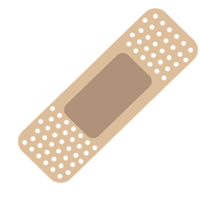Update on the management and treatment of patients with chronic skin lesions

Submitted: June 29, 2021
Accepted: December 7, 2021
Published: December 27, 2021
Accepted: December 7, 2021
Abstract Views: 2413
PDF (Italiano): 442
Publisher's note
All claims expressed in this article are solely those of the authors and do not necessarily represent those of their affiliated organizations, or those of the publisher, the editors and the reviewers. Any product that may be evaluated in this article or claim that may be made by its manufacturer is not guaranteed or endorsed by the publisher.
All claims expressed in this article are solely those of the authors and do not necessarily represent those of their affiliated organizations, or those of the publisher, the editors and the reviewers. Any product that may be evaluated in this article or claim that may be made by its manufacturer is not guaranteed or endorsed by the publisher.
Similar Articles
- Giuseppe Nebbioso, C. Albanese, F. Bonat, A. Botta, Giovanni Vito Corona, Cira Costagliola, Corrado Maria Durante, Ciro Falasconi, D. Foglietti, Francesco Giacinto, Pasquale Longobardi, Klarida Hoxha, Cosimo Maglio, Vincenzo Mattaliano, Massimo Menculini, Giovanni Battista Mosti, Carmela Orefice, Sonia Remafedi, Donatella Rossolini, Felice Tafuro, Francesco Petrella, Quality of life study in Wound Care. Final report , Italian Journal of Wound Care: Vol. 1 No. 1 (2017)
- Romina Corgiat-Loia, Lucia Pavignano, Marcella Vargiu, Laura Perono Minino, Giovanna Capace, Fabrizia Cogo, Lucia Carlino, Chiara Mangolini, Marzia Soave, Eraldo Personettaz, Enrica Bertotti, Fabrizio Aprà , Carla Varola, Cristina Amato, Eleonora Aloi, Looking beyond...a path started in ASL TO4 for the treatment of chronic skin lesions , Italian Journal of Wound Care: Vol. 2 No. 2 (2018)
- Francesco Giacinto, Ciro Falasconi, Elisabetta Giacinto, Manuela Germano, Domenica Ciuffoletti, The use of modern technologies based on telemedicine in wound care: experience in high-tyrrhenian region and the province of Cosenza, Italy , Italian Journal of Wound Care: Vol. 2 No. 1 (2018)
- Ciro Falasconi, Vincenzo Amalfi, Patrizia Baroni, Giovanni Vito Corona, Corrado Maria Durante, Paola Fanin, Caterina Favaro, Massimo Fornaciari, Alessandro Farris, Manuela Galleazzi, Francesco Giacinto, Giorgio Guarnera, Vincenzo Lauletta, Mario Marazzi, Marco Masina, Vincenzo Mattaliano, Giovanni Battista Mosti, Giuseppe Nebbioso, Francesco Stanganello, Francesco Petrella, Survey on pain in patients with chronic skin lesions , Italian Journal of Wound Care: Vol. 1 No. 1 (2017)
- Fabio Mozzarelli, Sara Gaetti, Assessment of vascular ulcers of the lower limbs through the Wound Trend Scale: the experience of the Local Health Authority of Piacenza , Italian Journal of Wound Care: Vol. 2 No. 1 (2018)
- Ciro Falasconi, Vincenzo Amalfi, Patrizia Baroni, Giovanni Vito Corona, Corrado Maria Durante, Paola Fanin, Caterina Favaro, Massimo Fornaciari, Alessandro Farris, Manuela Galleazzi, Francesco Giacinto, Giorgio Guarnera, Vincenzo Lauletta, Mario Marazzi, Marco Masina, Vincenzo Mattaliano, Giovanni Battista Mosti, Giuseppe Nebbioso, Francesco Stanganello, Francesco Petrella, Survey on issues concerning eHealth and telemedicine in Wound Care , Italian Journal of Wound Care: Vol. 1 No. 1 (2017)
- Francesco Petrella, Franca Abbritti, Francesca Bachetti, Sonia Brizzi, Michele Bruscella, Piero Baà¹, Mario Cala, Ferdinando Campitiello, Giovanna Capace, Massimo Calveri, Marina Comandini, Giovanni Vito Corona, Teresa Cosentino, Amarilli Croce Casalena, Cinzia Datteri, Cristiana Di Campli, Raffaele Di Nardo, Enrica Di Spirito, Filomena Discenza Spensieri, Ciro Falasconi, Michele Angelo Farina, Caterina Favaro, Domitilla Foghetti, Andrea Frasca, Manuela Galleazzi, Pierluigi Gallo, Luca Gazzabin, Ivo Gerbelle, Manuela Germano, Francesco Giacinto, Serena Giannini, Giorgio Guarnera, Klarida Hoxha, Vincenzo Labbro, Vincenzo Lauletta, Deianira Luciani, Giuseppe Maierà , Giuseppe Maccarone, Cosimo Maglio, Paolo Mascioli, Vincenzo Mattaliano, Massimo Menculini, Piermauro Miraglia, Giovanni Battista Mosti, Marcello Napolitano, Giuseppe Nebbioso, Pamela Orazi, Fabio Pacifico, Maurizio Palombi, Piergiorgio Pastore, Marina Pierangeli, Stefano Priolo, Marco Romanelli, Donatella Rossolini, Elisa Ronzullo, Maria Teresa Scalise, Patrizia Scarpelli, Piero Secreto, Claudio Solinas, Marilena Tender, Stefano Trovò, I.S.U.S. PROJECT (ITALIAN SKIN ULCER STUDY) (1 January 2015-31 December 2016). Final data , Italian Journal of Wound Care: Vol. 1 No. 1 (2017)
- Valeria Borsani, Alberto Salomone, Alessandro Landolfi, Giuseppe Romito, Luciano Romoli, Fabio Pellegatta, Orsola Sironi, A quality monitoring system in the management of pressure injuries at home. Prospective observational cohort study within a Home Care Provider , Italian Journal of Wound Care: Vol. 8 No. 3 (2024)
- Elia Ricci, Monica Pittarello, Clinical evaluation of the efficacy and tolerability of a new device based on of Rigenase® and polyhexanide in the treatment of chronic skin lesions , Italian Journal of Wound Care: Vol. 6 No. 2 (2022)
- Elisabetta Sardone, Elena Toma, Learning survey: assessment and management of the patient with wounds , Italian Journal of Wound Care: Vol. 2 No. 1 (2018)
You may also start an advanced similarity search for this article.


 https://doi.org/10.4081/ijwc.2021.78
https://doi.org/10.4081/ijwc.2021.78




